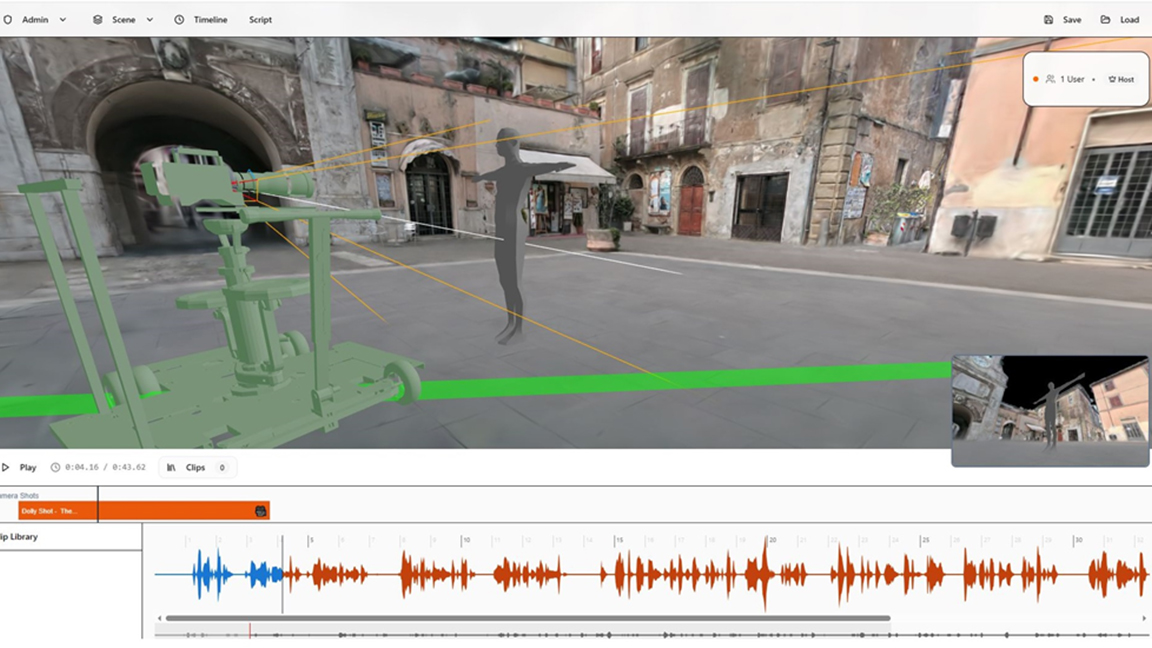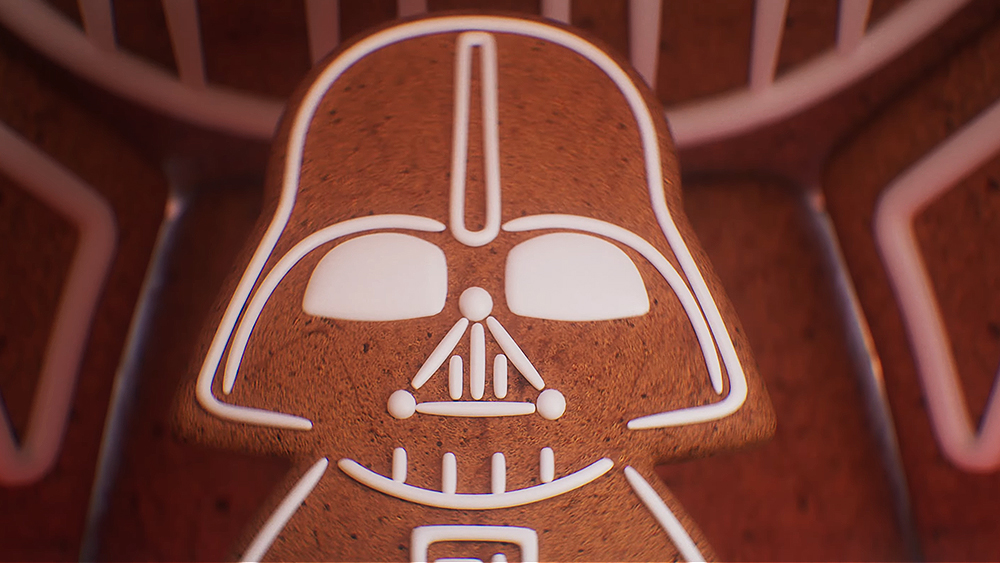For anyone who's ever tried to make a movie, really make one, you know the drill. Before a single shot is framed, you're already knee-deep in budgeting spreadsheets, calendar clashes, and a hundred tiny decisions about tools and workflows. Somewhere along the way, the creativity that started it all gets buried.
But what if the process could start differently? What if, instead of waiting for funding, locations, or crew availability, you could open a browser and start visualising your film today?
That’s the promise behind Spark, the new collaborative filmmaking platform from Lightcraft Technology, which is making its debut at SIGGRAPH 2025. It’s not just another cloud tool or AI platform; Spark is a rethink of how stories get off the ground.
Built as a browser-based hub, Spark brings together preproduction, virtual cinematography, team communication, asset management, and post-production prep, all in one connected space. Instead of wrestling with disconnected apps and file formats, Spark invites creators into a single digital studio, where story and shot design lead the way.

A place to 'spark' ideas
The heart of Spark is something called Spark Shot, an interactive scene builder that works like a virtual set, but entirely in your browser. Using 3D models in the USD format, photogrammetry scans, audio clips, and AI-generated assists, filmmakers can sketch out scenes visually, experimenting with framing, lighting, and camera movement long before anyone arrives on set and yells 'action'.
It’s part previs tool, part director’s sandbox, and crucially, it’s accessible; you can use it on a laptop, wherever you happen to be. Suddenly, building a shot isn’t something that only happens in the heat of production; it’s part of the creative writing process. As I watch a demo with CEO Eliot Mack, I'm struck by how this is ideal not just for new Spielbergs but the next Charlie Kaufman or Aaron Sorkin – writers are going to love planning scenes using Spark.
Naturally, there's an AI angle in here. But Spark's AI is not a gimmick, but a thoughtful collaborator. Spark is designed to let creators use as much or as little AI as they want, from camera framing suggestions to full 3D scene assembly.
Daily design news, reviews, how-tos and more, as picked by the editors.
“You can have a 3D artist build your scene, or let the system rough it out for you,” says Lightcraft CEO Eliot Mack. “We're using AI to generate proxy sets, fill in detail, and help frame ideas. It’s about supporting creativity, not replacing it.”
Spark is a watershed moment
The core philosophy behind Spark isn’t just technological, it’s practical. Eliot tells me how he spent years helping major productions solve problems on set with earlier Lightcraft tools. But eventually, he realised they were starting too late.
“The real magic of filmmaking happens much earlier, at the point of inception,” Eliot explains. “That’s where we needed to be.”
Eliot believes Spark represents a larger shift, not just in tools, but in the timing of creativity.
“We’re in another one of those watershed moments where technology is opening new freedoms in how films are created,” he says. “It’s always been a mix of art and technology, from sound and colour to handheld cameras and the French New Wave. But unlike some past innovations that added restrictions, this one opens doors. It gives storytellers freedom at the very start, not just the end.”
Solving filmmaking chaos
Of course, as any filmmaker knows, the creative flow quickly runs into a wall once real assets get involved. Scripts change, scenes evolve, models need updating, and suddenly your production becomes a game of data whack-a-mole.
To tackle this, Spark includes Spark Atlas, a production database with a twist: it understands your script. By parsing your screenplay and linking each element, be it a prop, line of dialogue, or shot, to the correct assets, Atlas becomes a kind of living blueprint of your film.
Built on reliable open-source tech like Supabase and PostgreSQL, it promises to also be secure, scalable, and team-friendly. Everything from EXR sequences to camera takes to AI models lives here, cleanly sorted, automatically linked, and ready to evolve as the project does.
Weening us off Unreal Engine?
The key to Spark’s potential lies in how it approaches 3D. While traditional tools like Blender and Unreal Engine are powerful, they weren’t designed for this early, conceptual stage. Spark aims to change that.
“Everyone loves Blender and Unreal, I do too,” Eliot says. “But they were built for post, for technical precision. But nobody’s cracked the Google Docs of 3D yet, something creative people can use from day one, without needing to be technical.”
Rather than requiring filmmakers to wrestle with shaders and simulation settings, Spark focuses on letting them play with ideas, storyboards that move, shot plans that evolve, and scripts that link directly to assets in a living, editable world.
While the tech is different, hearing Elliot reminds me of a similar sense of direction from Chaos' Director of Special Projects at Chaos Lab, Chris Nichols, who also wants to unlock filmmakers from needing to use technical tools and platforms like Unreal Engine.
AI used properly
Another core use of AI in Spark is texture and detail generation, especially in projects that use a mix of green screen and digital sets. In a recent test project with the Entertainment Technology Center, Lightcraft used AI to fill in photorealistic details based on low-resolution 3D proxies of environments, like cracked plaster, wood grain, or lighting imperfections that would be prohibitively time-consuming to build by hand. I see a demon in this short scene, and it's impressive.
“What AI is really good at is detail, like generating knots in the wood or mortar between bricks,” says Eliot. “We shoot actors on green screen, light them properly, and use AI to enhance the digital environments with detail that matches the world. That saves weeks of work, and it’s a real production technique.”
By using AI to handle the bits that are hard, slow, and repetitive, Spark has the potential to enable directors and artists to focus on what really matters, creative areas such as performance, story, and visual flow.
Draft scenes become final shots
Then there’s Spark Forge, the final piece of the puzzle, and possibly the most quietly revolutionary. While most virtual production tools stop after previs, Forge picks up right where Spark Shot leaves off, transforming rough scenes into usable post-production materials.
By pulling metadata from Jetset and timeline exports like OpenTimelineIO, Spark Forge can automate key steps in the VFX pipeline: tracking, batch compositing, asset linking, and even shot scripting. It’s not a render farm, but something closer to a “shot factory”, capable of pushing out hundreds of rough composites in hours, complete with pre-written scripts for tools like Blender, Unreal Engine, Nuke, Maya, and SynthEyes.
Interestingly, Spark’s journey began not with a shift in software, but hardware. Years ago, Lightcraft built complex, military-grade camera tracking systems, hardware that was impressive, but expensive and inflexible. The turning point came when consumer tech caught up.
“When the iPhone 11 Pro came out, we realised, this thing tracks,” says Eliot. “Not quite as well as our custom-built rigs, but close. And Tim Cook was going to ship a lot more iPhones than we were ever going to ship tracking gear.”
That revelation led to Jetset, the iPhone-based virtual production system that paved the way for Spark. Once tools could fit in your pocket, production didn’t have to wait for a stage or a truck full of gear. It could start anywhere.
“Filmmaking doesn’t have to start in a studio,” Eliot adds. “It can start in your pocket.”
Less friction, more filmmaking
What ties all these pieces together – Shot, Live, Atlas, Forge – is a single philosophy: filmmaking should be fluid, connected, and, well… easier for everyone. Lightcraft isn’t trying to replace the craft or automate away the magic. Instead, Spark is designed to give filmmakers a head start and keep that momentum going, all the way through post.
“The underlying challenge, engineering a story at scale, world-building from scratch, and maintaining the human element, that’s what makes filmmaking magical,” says Eliot. “And that’s what Spark is built to support.”
After more than 20 years of tool development and industry R&D, including an Emmy in 2013 and a 'Product of the Year' win at NAB earlier this year, Spark feels like the natural evolution of Lightcraft’s mission: to make it easier to just make movies.
A public release is expected in 2026, with a preview available now at SIGGRAPH 2025 (Booth 710). Early access and beta signups are open to filmmakers who want to get hands-on. Try the Lightcraft Jetset app.

Ian Dean is Editor, Digital Arts & 3D at Creative Bloq, and the former editor of many leading magazines. These titles included ImagineFX, 3D World and video game titles Play and Official PlayStation Magazine. Ian launched Xbox magazine X360 and edited PlayStation World. For Creative Bloq, Ian combines his experiences to bring the latest news on digital art, VFX and video games and tech, and in his spare time he doodles in Procreate, ArtRage, and Rebelle while finding time to play Xbox and PS5.
You must confirm your public display name before commenting
Please logout and then login again, you will then be prompted to enter your display name.
